-Click Here- for description.

The Elastolin Siege Tower is another example of extremely fine Hausser workmanship. When the crank is turned two chains slowly pull up the drawbridge. A locking lever keeps the crank from spinning backwards while winding the chain.
The wheels on the base turn as well as it rolls into siege position.
Size: 13 1/2" tall.
Between decks approx 3 1/4" first two & 4" on the 3rd.
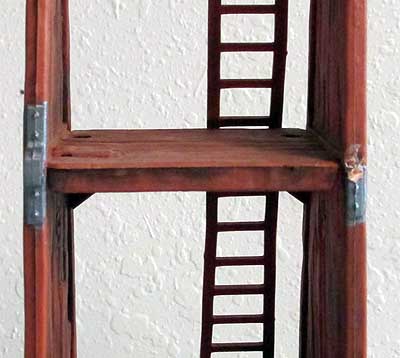



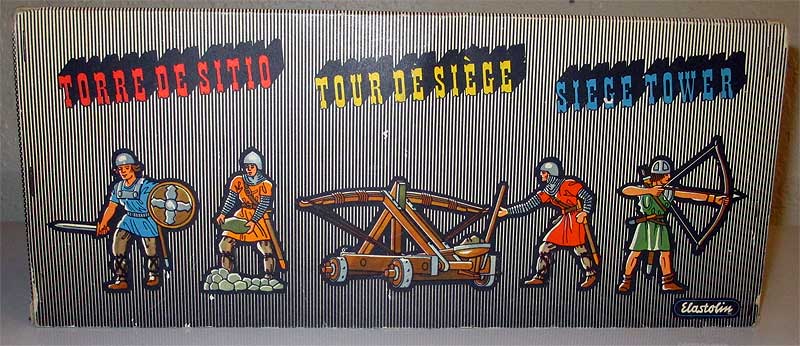
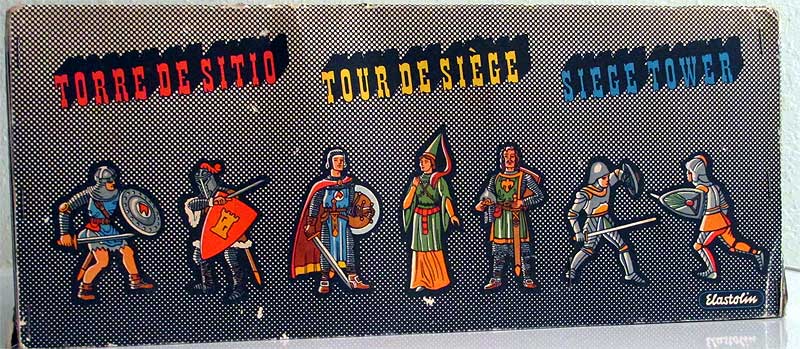
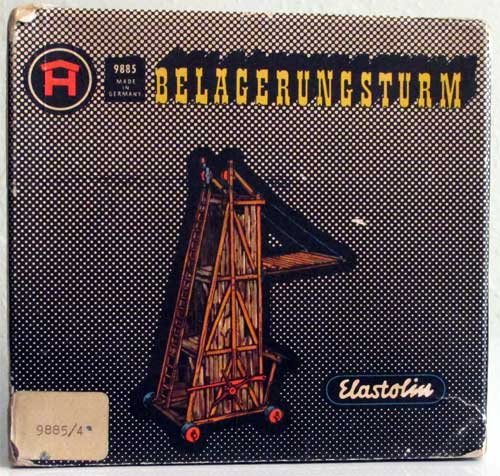
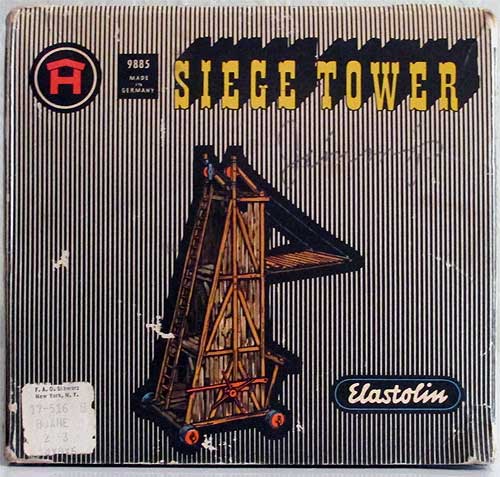
Example used in Diorama

One of the siege weapons used during the Middle Ages include the Siege Tower. The Siege Tower was an invaluable Medieval siege attack weapon. The Siege Tower was designed to to protect the soldiers attacking the defensive walls of a castle, town or fortress. It was also designed to hold soldiers and siege weapons. The siege tower was usually a tall, rectangular construction with four wheels and a height roughly equal to that of the wall or sometimes higher. The siege tower mechanism carried scores of soldiers, who climbed ladders to move between the different levels of a siege tower. Near the top of the siege tower was a strategically placed drawbridge which was lowered to allow the attackers to race onto the battlements. Siege Towers were large and expensive to construct - they were therefore the last type of siege weapon to be constructed at a prolonged siege when the fortification could not be penetrated by ladder assault, sapping or by pounding walls.
Siege Tower Coverings
The relative safety offered by the Siege tower from missiles or fire was due to the cover that it offered the soldiers. The framework of the siege tower was covered in animal hides. At the last minute when the siege tower was about to be rolled or wheeled into place the hides were soaked in mud and vinegar to add further protection. There were even iron plates which could be added to the siege towers, although this was an extremely expensive option.
Siege Tower Objectives
The objective of a siege tower was to allow soldiers to mount a direct and close attack on a fortification - castle, fortress or town. Siege Towers were usually constructed with wheels and reached 3 stories in height. A siege tower was a multipurpose machine which could hold men, their weapons and even small siege engines from close-range positions of relative safety. Mangonels were sometimes placed at the top of the siege tower.
Siege Tower Variations
The relative safety offered by the Siege tower from missiles or fire led to a series of siege tower variations. A horizontal version of a siege tower was developed to provide cover for a battering ram. Conventional siege towers were also known to have a battering ram built into the lowest level of the structure. Each siege tower was designed to suit the requirements of the wall it was required to attack.
Siege Tower History
Siege Tower history dates back to antiquity. The Siege Tower is believed to be an ancient war engine which was used in China and by the Romans and Greeks. Records of major English sieges of the Middle Ages mention the use of siege towers. It was not uncommon for the defenders also to build siege towers to directly oppose those of the attackers. A siege tower was used at the siege of Kenilworth Castle in 1266. Records show that the siege tower held two hundred archers and eleven siege engines.
Preparing to use the Siege Tower
Many preparations had to be made before using a siege tower. Many castles and fortresses were surrounded by moats and ditches so before the tower could be moved near the walls the moat or ditch had to be filled with rubble and earth. The ground leading up to the required position had to be chosen to allow for easy transportation of the siege tower.
Attacking with the Siege Tower
When all was ready the siege tower would be rolled, pushed or wheeled into into place next to the wall. Men were positioned on all levels. The drawbridge on the top deck was lowered, like a gangplank, enabling the soldiers to rush forward on to the wall of the fortification. As men departed from the siege tower reinforcements moved upwards from the lower levels which added weight to the initial assault. Not all the soldiers left the Siege tower. They were often were defended by archers shooting through arrow slits.
Building a Siege Tower
Building a Siege Tower required the design and building skills. Siege weapons, such as the Siege Tower, were made to order! They were far too cumbersome to move from one place to another. In a siege situation the commander would assess the situation and the siege weapons design requirements to break a siege.